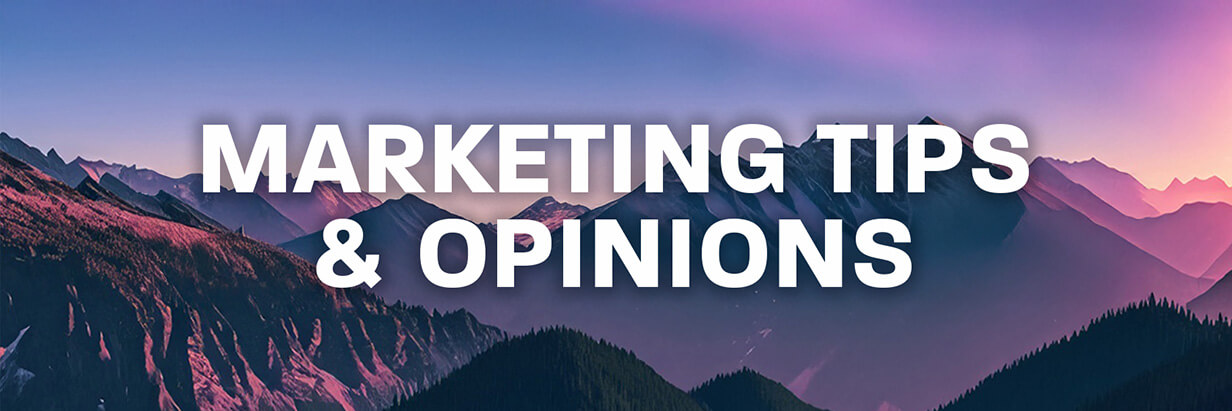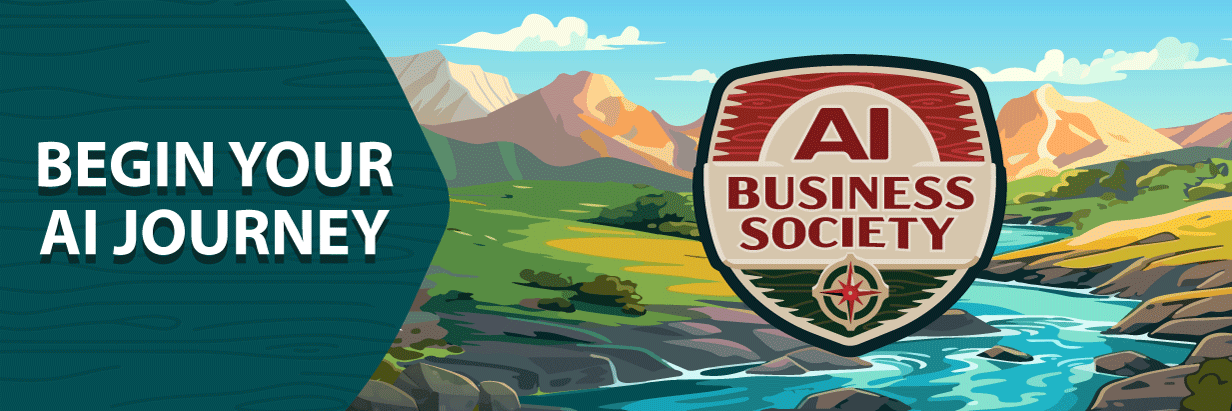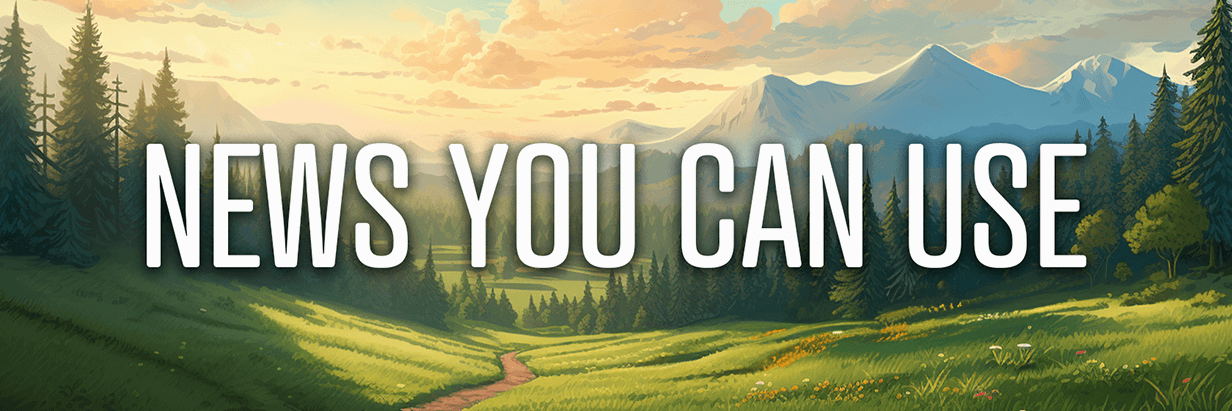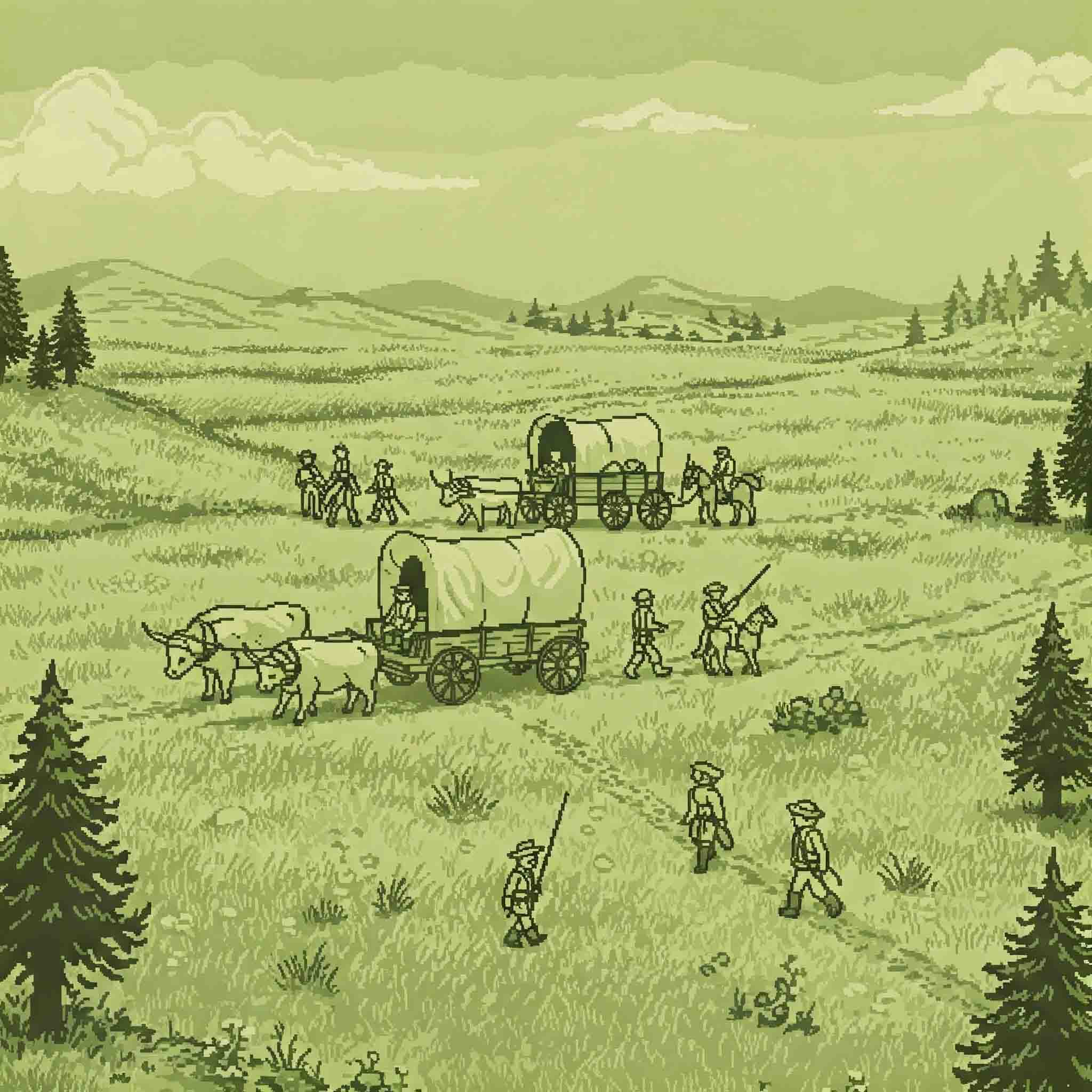Today's Guide to the Marketing Jungle from Social Media Examiner...
presented by 
We're halfway through the week, Alluser, how's your marketing strategy holding up? Today's tips and insights will help you fine-tune your approach.
In today's edition:
-
Your roadmap to platform-proof marketing
-
Data-Inspired Content: Where metrics meet meaning
-
Scaling content with Interactive personas and content assistants
-
🗞️ Industry news from Instagram, TikTok, Youtube, and more

Marketing That Outlasts Algorithm Changes
Is your marketing tied to a single platform's algorithm?
We all have to start somewhere, and we know continuing to relying on just one platform for visibility, leads, and sales isn't the best strategy. But when the time comes to diversify, knowing where to invest more of your limited time and resources isn't a no-brainer.
What if there was a simple framework that could eliminate the guesswork and help you build a stable, diversified marketing presence without burning out?
Amber Figlow shares a three-part playbook that demystifies where and why your business should show up online. This straightforward formula helps you balance quick wins with long-term sustainability, ensuring you're not constantly chasing the next platform trend. Watch more here.
Data-Inspired vs. Data-Driven: Building a Smarter Content Strategy
Does the data-driven approach to content strategy have spinning your wheels?
Brian Piper has a better way--a more nuanced perspective: being data-inspired.
What's the difference? It's like having GPS versus blindly following directions. One empowers intelligent decision-making; the other removes the human element entirely.
Brian walks through the often-overlooked goldmines hiding in your website analytics, social channels, email metrics, and multimedia platforms.
The post breaks down practical approaches to extract meaningful insights from each channel (including some clever Excel tricks your native analytics won't show you) while avoiding what Brian calls data paralysis. Read more here.

Unlock AI Marketing Breakthroughs, Alluser! 🚀
If you're like most of us, you are trying to figure out how to use AI in your marketing. You've likely heard people say that AI can boost your productivity and improve your marketing—while saving you time.
BUT HOW?
Introducing the AI Business Society—an AI marketing community from your friends at Social Media Examiner. The AI Business Society is your secret weapon for boosting your productivity, unlocking your creativity, and becoming a truly indispensable AI-powered marketer.
Ready to find out more?
Yes, I want ALL the details.

Building an AI Content Team: How to Rapidly Outperform Your Competitors
Feeling overwhelmed trying to keep up with content demands in a competitive market? Wondering how other businesses are using AI to produce more—and better—content without sacrificing quality?
An AI content team is a collection of specialized AI assistants trained to handle specific content creation tasks.
Your AI specialists will deliver content that is about 80% done, allowing your human team members to focus on reviewing, refining, and adding their unique perspectives to take content from good to great. Your human team members become editors and creative directors rather than content production machines.
Build Your First AI Content Assistant
Start by identifying the different content types your organization produces or needs to produce. Common examples include blog posts, email newsletters, thought leadership articles, and social media posts.
Start broad and refine as you go along. For example, you might initially build one specialist for writing LinkedIn posts, but over time, realize you need specialized LinkedIn post assistants for:
-
Identifying discussion angles from news articles
-
Creating storytelling posts about work experiences
-
Drafting thought leadership content
-
Writing responses to industry trends
-
Extracting key points from longer content
Use AI to Create a Style Guide
Paste 8-10 examples of your best- and worst-performing content for a specific content type into a Google Doc or Word document. Be sure to label each example clearly with clear headers between examples.
Now, upload the examples to ChatGPT and prompt it to analyze your content, emphasizing that the subject matter of each piece of content should be ignored. This ensures your AI specialists learn your communication style rather than fixating on specific subjects, making them versatile across different topics.
Carefully analyze these pieces of content only for style and execution, ignoring the topic. I want you to focus on the writing mechanics and stylistic decisions. Specifically, provide detailed observations for each of the following categories: 1: Sentence Structure: Are the sentences predominantly short, medium, or long? Are they simple, compound, or complex? Is there variation in sentence length for rhythm and pacing? 2: Paragraph Length and Structure: Are paragraphs mostly short (1–3 sentences), medium (4–6), or long (7+)? Does the structure help with readability or feel dense? Are ideas neatly contained within each paragraph? 3: Tone: What is the dominant tone (e.g., professional, casual, friendly, witty, authoritative)? Is the tone consistent throughout? Does the tone support or distract from the clarity of the message? 4: Voice: Is the content written in first person ("I," "we"), second person ("you"), or third person ("they," "one")? How does the chosen voice affect engagement or authority? 5: Vocabulary and Complexity: Is the vocabulary simple, moderate, or advanced? Are there words that seem needlessly complex or overly simplistic? Does word choice match the tone and audience? 6: Use of Industry Terminology or Jargon: Are technical terms used? If so, are they explained or assumed to be known? Does jargon enhance clarity for experts or create barriers for general readers? 7: Examples, Analogies, and Metaphors: Are concrete examples used to illustrate ideas? Are metaphors or analogies incorporated? If so, are they effective and relatable? Do they clarify or distract from the point being made? 8: Use of Humor or Emotion Is humor used? What type (dry, playful, sarcastic)? Are emotional appeals present (empathy, urgency, excitement)? Does this enhance or undermine the message? 9: Formatting Preferences: Is there clear use of headers, subheaders, bold text, italics, or bullet points? Are lists used effectively? Is the visual structure reader-friendly or cluttered? 10: Punctuation and Grammar Style: Is the Oxford comma used consistently? Are em dashes, colons, semicolons, or parentheses used? Is the punctuation conventional or stylized? 11: Call-to-Action (CTA) Approach: Is there a CTA? Where is it placed (beginning, middle, end)? Is it direct or subtle? Is the CTA framed with urgency, value, or curiosity? For each point above, write 2–5 sentences summarizing what the content does and how it affects style, clarity, and reader experience. Compare across multiple pieces only after analyzing them individually. Work with the AI to revise the guide until it accurately captures your preferred style, then ask the AI to give you a clean style guide you can download.
Create Your CustomGPT
To create your AI specialists using ChatGPT, log into your ChatGPT account, click on "Explore" in the left sidebar, and then select "Create a GPT" at the top.
Name your GPT according to its specific function (e.g., "LinkedIn Post Creator for Tech Industry"), then provide a clear statement of the GPT's purpose. "You are a specialized LinkedIn post writer for a tech company. Your job is to create engaging posts that follow these specific style guidelines:"
Paste the entire style guide for that content type into the Instructions with guiding examples and save your custom GPT.
Build Your Interactive Persona CustomGPT
These AI personas serve as an on-demand focus group that can review your content before it goes live, identifying issues that may confuse or alienate your actual audience.
To create interactive personas, use a tool like Perplexity, ChatGPT Deep Research, or Google Deep Research. You can either upload your existing customer persona or make a basic one by providing demographic information about your target audience.
Next, ask the AI to develop a detailed persona, including psychographics and answers to questions like "What keeps them up at night?" "What are their goals?" and "Where do they go to get information?"
When you're happy with the profile, ask the AI to summarize the persona into a clean document. Then, download the document and use it to create a custom GPT based on this persona.
Create Content With Your AI Content Team
Have your AI content specialists draft the initial content, then use the @ tag to activate your interactive persona in the same chat. Once tagged into the chat, ask the persona questions like "What don't you agree with?" "What's confusing?" and "What do you wish you knew more about after reading this?"
Use the responses to improve the AI-generated content.
Today's advice provided with insights from Natalie Lambert, a featured guest on the AI Explored podcast.
Watch the full interview YouTube
Instagram Updates Edits App With New Fonts, Voice Effects, and Faster Tools: Instagram has released its first major update to its new Edits video editing app just one week after launch. Marketers and content creators can now access 125 fonts, 15 voice effects, and a new "Apply all" feature that speeds up editing by applying changes across all clips. The app continues to offer free tools like multichannel tracking and watermark-free downloads, with Meta hinting that more advanced, possibly paid AI features may come in the future. With weekly updates planned, Edits is positioning itself as a strong competitor to CapCut for short-form video production. Social Media Today
Pinterest Launches Enhanced Visual Search Tools: Pinterest has rolled out new visual search features aimed at helping users—particularly in women's fashion—better discover and shop content based on their style. Key updates include AI-generated keywords to describe elements of an image, a new animated glow to highlight shoppable items, and a refinement bar to filter results by style, occasion, or color. Users can now also long-press on any Pin to initiate a visual search directly from the home feed. For marketers, this enhances Pinterest's role as a product discovery and shopping platform, creating new opportunities for visibility and conversion through visually driven, intent-rich engagement. Pinterest
Spotify Adds Public Podcast Plays: The platform has launched a new podcast metric called Plays, showing how many times each audio or video episode has been actively listened to or watched. This visibility will appear across the app (home page, show page, and episode page) and is also available in Spotify for Creators and Megaphone. TechCrunch
TikTok Shop Scales Global Growth With Stronger Safety and IP Protections: As TikTok Shop expands into new markets like Ireland and Spain, it's doubling down on platform safety and intellectual property (IPR) enforcement. For marketers, this means TikTok Shop is becoming a safer and more reliable place to promote and sell products. The platform now has 1,800 experts checking for intellectual property (IP) issues—up from 1,400. It handled 400,000 reports from users about IP concerns—twice as many as before and blocked over 7 million products for breaking IP rules—up from 5.2 million. It also removed e-commerce tools from 700,000 creators and shut down 450,000 seller accounts for rule-breaking. TikTok
TikTok Pulse Suite: Key Takeaways for Marketers: The premium ad placement solution will align brands with the most culturally relevant and brand-safe content on the platform. It enhances visibility by situating ads next to top-performing videos and emerging trends in the highly trafficked For You feed. Pulse Premiere places ads alongside premium publisher content (e.g., Disney, Warner Bros., NFL) during major events or year-round. Pulse Core aligns ads with top user-generated content, organized into Max Pulse (top 4% of content across TikTok), category & seasonal lineups )trending content by topic or moment), and custom lineups of AI-curated, brand-specific content groupings (now in U.S. Open Beta). TikTok
YouTube Ads Expansion: At Google NewFront, Google announced updates that expand opportunities for YouTube marketers using Connected TV (CTV) and programmatic ads. You can now connect YouTube ads with commerce intent using retail media and shopper insights from partners like Costco and United Airlines to enable end-to-end measurement of sales impact across online and in-store purchases. Google AI is now deeply integrated into DV360, enabling smart inventory recommendations (e.g., "live sports fans"), auto-filled campaign settings based on your goals, instant reporting (e.g., "sales from my YouTube ads"), and real-time troubleshooting support. These updates make it easier for YouTube marketers to scale video campaigns, align ads with purchase behavior, and optimize performance with AI-driven insights. Google
Shared YouTube Premium Accounts: YouTube is testing a two-person Premium subscription tier in select countries (India, France, Hong Kong, and Taiwan), offering a discounted plan for cohabitating users—similar to Spotify Duo. This move is designed to attract users who want ad-free viewing, background play, and downloads without paying for a full family plan. TechCrunch
What Did You Think of Today's Newsletter?
Did You Know?
The Oregon Trail computer game was originally developed in 1971 by Don Rawitsch, Bill Heinemann, and Paul Dillenberger as a teaching tool for an eighth-grade history class.

Michael Stelzner, Founder and CEO
P.S. Add
michael@socialmediaexaminer.com into your contacts list. Use Gmail?
Go here to add us as a contact.
We publish updates with links for our new posts and content from partners. Your information: Email:
tukangpostoemel@gmail.com Opted in on: 2021-09-06 17:20:47 UTC.